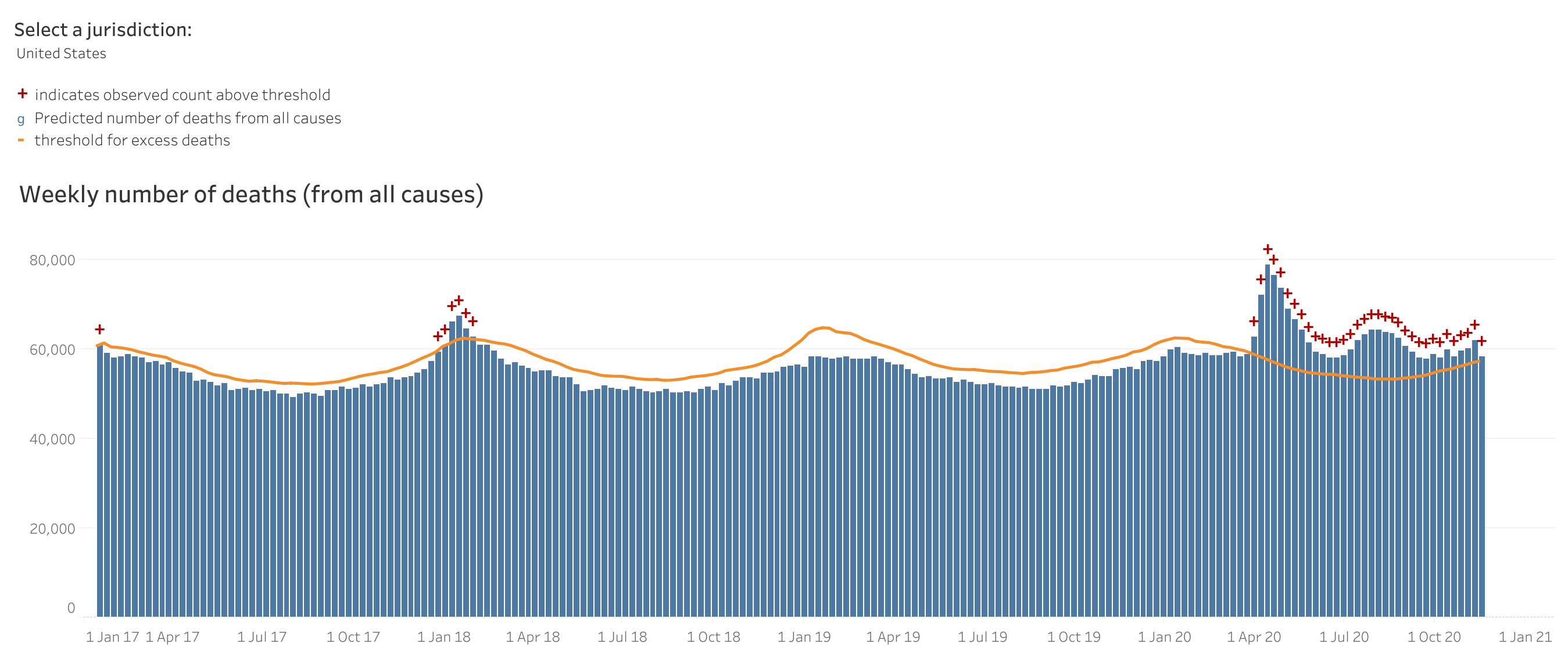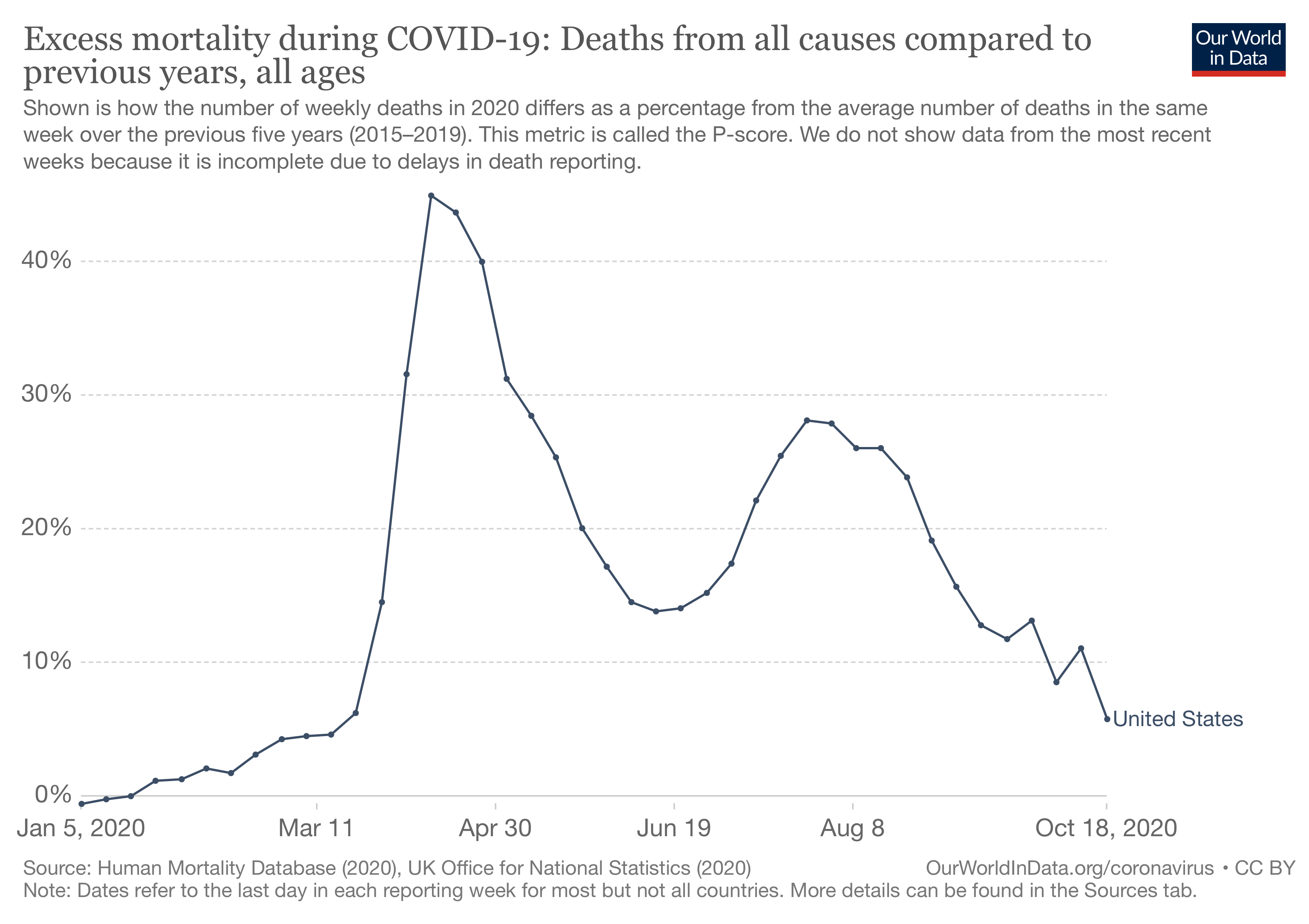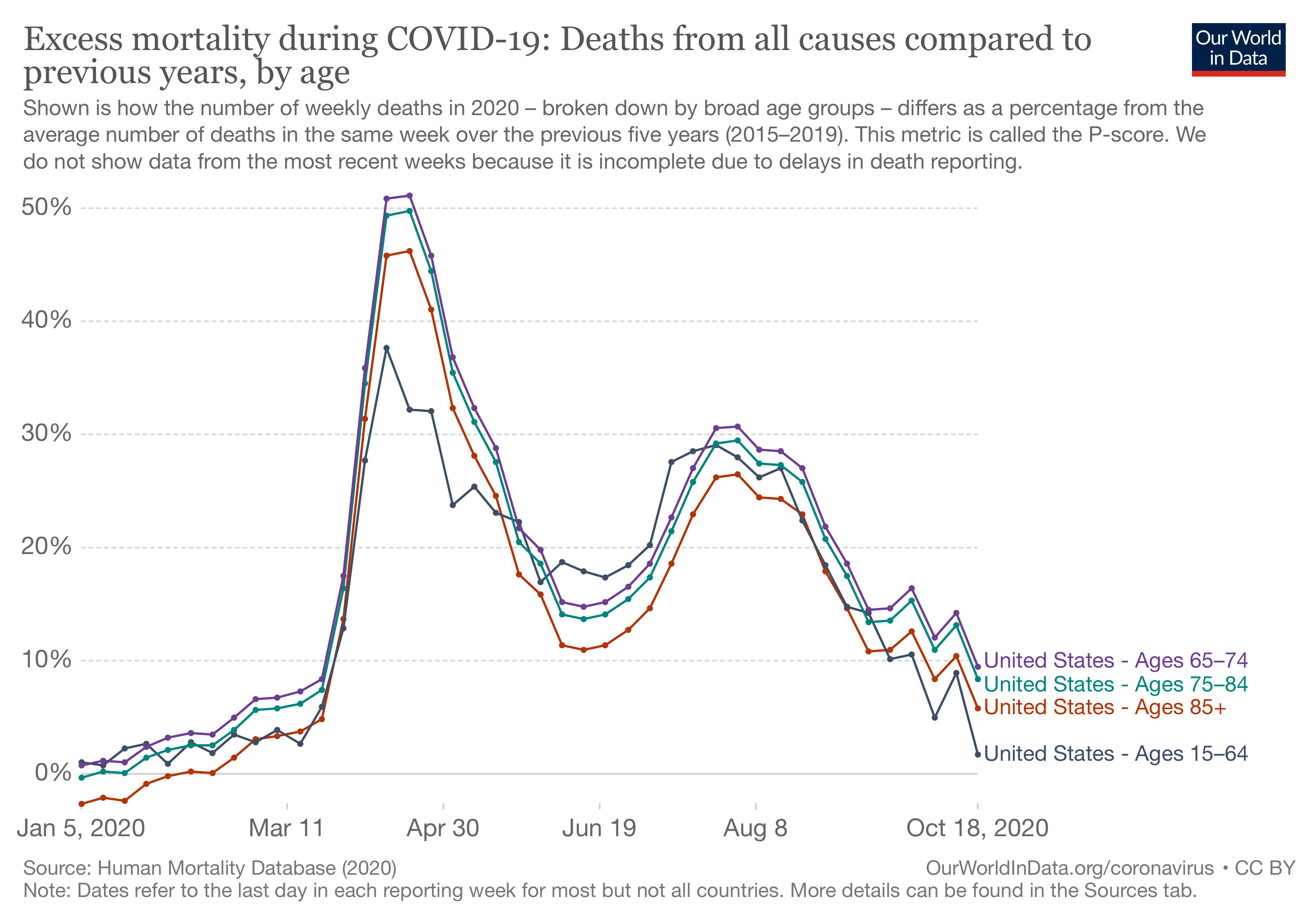
[ad_1]
CLAIM
“Johns Hopkins study mysteriously disappears after revealing, despite COVID, no more deaths in 2020 than in previous years”

DETAILS
Inaccurate: First, the so-called study was an article published in a Johns Hopkins University student newsletter. Second, the claim that no excess deaths occurred in 2020 is false. Data from the US CDC clearly shows that the death toll in 2020 is higher than in previous years, possibly due to the COVID-19 pandemic.
KEY HOLD

The United States recorded more than 200,000 more deaths (about 300,000 according to the latest CDC data) from all causes in 2020 compared to previous years. Excessive deaths have also been observed in all age groups, ranging from young adults to the elderly.
FULL CLAIM: “Johns Hopkins study mysteriously disappears after revealing, despite COVID, no more deaths in 2020 than in previous years”; “Using statistical analysis, Johns Hopkins University (JHU) lecturer found COVID-19 did not cause excessive deaths, but the university censored the article online . ”; “A few days ago, Johns Hopkins published a study according to which corona is [no big deal]. They then deleted it. ”
REVIEW
Several articles, such as the one from LifeSiteNews and the one from Gateway Pundit, published in late November 2020, claim that a “Johns Hopkins study” had shown no excess deaths in the United States from COVID-19, and that the the study was deleted shortly after its publication. These articles went viral on Facebook and received a total of more than 31,000 interactions on the platform, according to social media analysis tool CrowdTangle.
The claims are incorrect. First, the basis for this claim is not a scientific study, but an article in the Johns Hopkins Newsletter, a Johns Hopkins University student publication. The article, published on November 22, 2020, is a report on a presentation by Geneviève Briand, Associate Director of the Masters Program in Applied Economics at Johns Hopkins University. Briand’s fields of study are microeconomics and econometrics; however, she has no expertise in infectious diseases or epidemiology.
Second, the article’s report that Briand’s analysis showed no increase in deaths from previous years, based on data from the United States Centers for Disease Control and Prevention, is inaccurate. As the editor’s note attached to the article explains:
“Briand presented data on the total number of deaths in the United States compared to COVID-19-related deaths as a percentage […] an increase in excess mortality is not represented in these proportionalities because they are offered as percentages and not as raw figures.“
Indeed, by simply comparing the total number of deaths in 2020 so far compared to those in previous years shows a marked increase in deaths (Figure 1). And a CDC report estimated that between late January and October 2020, there were more than 299,000 excess deaths in the United States.[1].

Figure 1. Number of deaths per week from 2017 to 2020. The blue bars above the orange line indicate the presence of an excess of deaths for 2020 (marked with a + red). Data from the United States Centers for Disease Control and Prevention, retrieved November 30, 2020.
Data from other sources, such as the UK Office of National Statistics, also corroborates the US CDC’s global report on excessive deaths in 2020 (Figure 2). Furthermore, despite the article’s assertion that “COVID-19 had no effect on the percentage of deaths in the elderly”, an excess of deaths can be observed in all age groups, in especially the elderly (figure 3).

Figure 2. Percentage of excess deaths from all causes during the COVID-19 pandemic. Data collected from the UK Office for National Statistics and displayed by Our World in Data, retrieved November 30, 2020.

Figure 3. Percentage of excess deaths from all causes during the COVID-19 pandemic, broken down by age group. Data collected from the UK Office for National Statistics and displayed by Our World in Data, retrieved November 30, 2020.
The newsletter article also repeats the false claim that “the CDC classified all COVID-19-related deaths simply as COVID-19-related deaths.” Even patients who die from other underlying illnesses but are infected with COVID-19 count as deaths from COVID-19. This claim is based on a misunderstanding of how causes of death are certified. As explained in a previous review of Health Feedback, “Deaths are not classified as ‘COVID-19 deaths’ simply because the disease is confirmed or suspected. Instead, the patient’s clinical course must be consistent with the course of the disease to be classified as a death from COVID-19. […] For example, a patient whose death certificate mentions cancer as the cause of death would have presented clinical signs and symptoms compatible with cancer, and not with COVID-19. Such a patient would not be reported as a death from COVID-19. “
Finally, although the article was retracted by the editors of the News-Letter, it was not deleted or censored as some have claimed. It is still available in its entirety via the News-Letter, as the Editor’s Note itself includes a link to the retracted article. The editors also explained the reasons for the withdrawal:
“After The News-Letter published this article on November 22, it was brought to our attention that our coverage of Geneviève Briand’s presentation “COVID-19 Deaths: A Look at US Data” was used to substantiate inaccuracies dangers that minimize the impact of the pandemic.
We decided on November 26 to remove this article to stop the spread of disinformation, as we noted on social media. However, it is our responsibility as journalists to provide a historical record. We have chosen to remove the article from our website, but it is available here as a PDF.“
Many claims have downplayed the severity of the pandemic by alleging that epidemiological data, such as the number of cases, number of deaths and death rate, is inaccurate by accident or by conception. Some examples of these inaccurate claims have been verified by Health Feedback here, here and here.
[ad_2]
Source link
